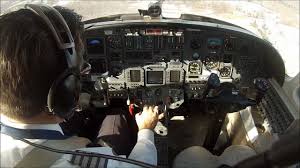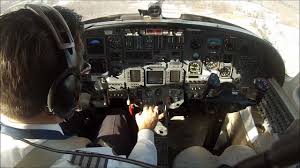
After initially starting off with three crew members on the flight deck, the number was reduced to two with the advent of the Being 757 which also permanently altered the design of the cockpits during the 1980s. The planemakers are now contemplating ways to reduce the number of flight deck crew to one and wants to start off with cargo planes.
The aim of this exercise is to enable carries to save tens of billions of dollars every year that it now expends for payment of compensation of pilots and their training. However, this would only be possible for implementation in commercial passenger flights after if the experiment with the cargo fights turn out to be successful, especially in terms of safety.
But it would be critical for such an endeavor to earn the trust of the general public after the disappearance of flight MH370 of the Malaysian Airlines and the deliberate crash down by the pilot of a Germanwings aircraft within the last few years. These are the issues that mad ethe rounds as the single pilot concept was thrown around at the Singapore Airshow.
“We are studying that, and where you will first see that is probably in cargo transport, so the passenger question is off the table,” Boeing research and technology vice-president Charles Toups said of one-pilot operations.
He said the persuading passengers to board a single-pilot jet would take a “couple of decades”. The proliferation of self-driving cars would be the starting point for the attempts to convince the public about the single pilot scheme and this process would have to be undertaken in a phase wise manner. Technologies for autonomous flight is being co-developed by Boeing and General Motors.
The transformation of a cockpit into a one pilot format when and if it is done so for conversion of passenger jets to freighters was demonstrated by Singapore Technologies Engineering’s ST Aerospace.
“The interest is global,” ST Aerospace’s chief operating officer, Jeffrey Lam said. “I think some [cargo operators] are watching each other; quite certainly if one jumps on board, you would expect the others to not want to fall behind because there’s a lot of cost savings here.”
The controls of commercial jets for both passenger and cargo need two pilots to operate even though some of the smaller business jets have systems for single pilot flights. The aim of having a two-pilot team is that one of them could take over in case the other becomes incapacitated.
Worldwide rules that mandated presence of two pilots in the cockpit during the entire time of a flight were introduced by regulators worldwide following the Germanwings crash in 2015 when a pilot intentionally locked himself up in the cockpit and crashed the aircraft.
However, it was found that such measures tended to add more risk than security and hence were repealed two years later.
The regional cargo flights appear to be the most realistic area for single-pilot flying given the present regulatory situation.
There is availability of enough technology for makers to create one pilot cockpits within a time period of just five years, said Kevin Shum, director-general of Singapore’s Civil Aviation Authority.
“But it is a question of the human factors,” he said. However, the major issues before the regulators would be incapacitation, distraction and fatigue, he said. “That I think will probably take a bit more time to work through.”
(Adapted from TheGuardian.com)
The aim of this exercise is to enable carries to save tens of billions of dollars every year that it now expends for payment of compensation of pilots and their training. However, this would only be possible for implementation in commercial passenger flights after if the experiment with the cargo fights turn out to be successful, especially in terms of safety.
But it would be critical for such an endeavor to earn the trust of the general public after the disappearance of flight MH370 of the Malaysian Airlines and the deliberate crash down by the pilot of a Germanwings aircraft within the last few years. These are the issues that mad ethe rounds as the single pilot concept was thrown around at the Singapore Airshow.
“We are studying that, and where you will first see that is probably in cargo transport, so the passenger question is off the table,” Boeing research and technology vice-president Charles Toups said of one-pilot operations.
He said the persuading passengers to board a single-pilot jet would take a “couple of decades”. The proliferation of self-driving cars would be the starting point for the attempts to convince the public about the single pilot scheme and this process would have to be undertaken in a phase wise manner. Technologies for autonomous flight is being co-developed by Boeing and General Motors.
The transformation of a cockpit into a one pilot format when and if it is done so for conversion of passenger jets to freighters was demonstrated by Singapore Technologies Engineering’s ST Aerospace.
“The interest is global,” ST Aerospace’s chief operating officer, Jeffrey Lam said. “I think some [cargo operators] are watching each other; quite certainly if one jumps on board, you would expect the others to not want to fall behind because there’s a lot of cost savings here.”
The controls of commercial jets for both passenger and cargo need two pilots to operate even though some of the smaller business jets have systems for single pilot flights. The aim of having a two-pilot team is that one of them could take over in case the other becomes incapacitated.
Worldwide rules that mandated presence of two pilots in the cockpit during the entire time of a flight were introduced by regulators worldwide following the Germanwings crash in 2015 when a pilot intentionally locked himself up in the cockpit and crashed the aircraft.
However, it was found that such measures tended to add more risk than security and hence were repealed two years later.
The regional cargo flights appear to be the most realistic area for single-pilot flying given the present regulatory situation.
There is availability of enough technology for makers to create one pilot cockpits within a time period of just five years, said Kevin Shum, director-general of Singapore’s Civil Aviation Authority.
“But it is a question of the human factors,” he said. However, the major issues before the regulators would be incapacitation, distraction and fatigue, he said. “That I think will probably take a bit more time to work through.”
(Adapted from TheGuardian.com)














